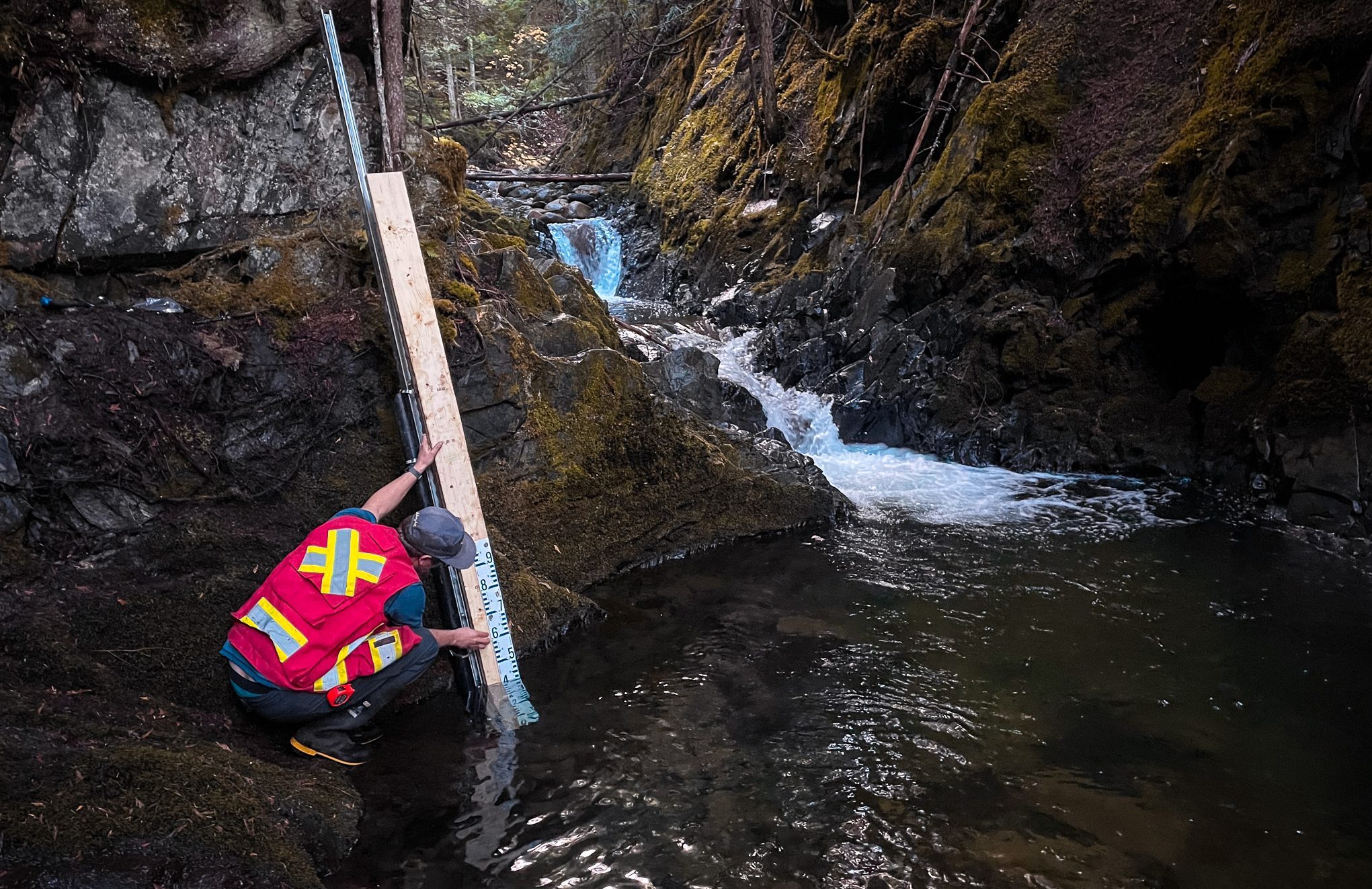An Exploration of Apex Creek: Capturing Hydrometric Monitoring in the Canadian Columbia Basin
The water science and stewardship work taking place in this story is on the unceded traditional territories of the Ktunaxa, Lheidli T’enneh, Secwépemc, Sinixt and Syilx Nations who have stewarded these lands for generations.
Located 15 minutes south of Nelson, B.C., Apex Creek tumbles down from the alpine and through a modest waterfall. Flowing over moss-covered rock, the water arrives at a tranquil pool. This is where Living Lakes Canada now collects data to deepen our understanding of Apex Creek as part of the Columbia Basin Water Monitoring Framework (CBWMF).
Prior to the CBWMF project piloting in 2022, the existing water monitoring network was insufficient to track climate impacts of drought, diminishing glaciers and changes in temperature and precipitation on freshwater sources like Apex Creek. Today, the CBWMF network includes 55 hydrometric monitoring sites operating across the Canadian Columbia Basin.
But, how are CBWMF sites selected from the vast amount of streams and watersheds within the Basin? We followed our team as they installed a new hydrometric site on Apex Creek last fall and asked CBWMF Program Manager Paige Thurston to break down the site selection process. This photo essay captures this process and more – let’s dive right in!
“To address scientific gaps in water monitoring, we run a data gap analysis to classify the watersheds in a specific Area of Interest into ‘cluster groups’ based on their similarities and differences,” Paige explained. “We then assess how well the existing monitoring network covers each cluster group and configure our monitoring network to address data gaps.”
Within any cluster group, many different streams in the region could be monitored. This is where community priorities become very important in guiding the site selection process.
“Through consulting with community members, we can better understand local monitoring priorities and identify the creeks, lakes and wetlands that the community wants to see monitored,” said Paige. This process enables the Framework to monitor sites that address scientific data gaps as well as community needs.

The objective of the monitoring completed through the CBWMF is to capture a wide variety of streams and climatic conditions. This will help develop a comprehensive understanding of climate change impacts in different regions across the Columbia Basin as well as at different elevations.

“Apex Creek represents a type of watershed that was identified as a gap through our data gap analysis,” Paige continued, “this watershed has its headwaters at quite a high elevation and it receives a lot of snow in the winter.”


“This is also an area that’s of high interest to the public because it’s quite a popular winter recreation zone,” she added. An additional consideration in the selection process was that Apex Creek is a tributary to the Salmo River and an ecologically significant wetland complex.
Installing this monitoring site increased the coverage of this type of watershed in the Lower Columbia-Kootenay region and supports the ongoing work being done by the Salmo Watershed Streamkeepers Society.
Once the installation was complete, the monitoring began.


“Now that we’ve installed the Apex Creek site, we will log water levels continuously throughout the year. But that only tells us the water level. It doesn’t tell us about the volume of water that’s flowing through the stream,” said Paige.


Since water levels vary by season, the field team will visit the site throughout the year to measure the flow of water at different water levels and start to correlate the relationship between water level and flow.

The long-term objective of the Columbia Basin Water Monitoring Framework is to provide data to inform adaptive watershed management and freshwater stewardship strategies for local communities as climate impacts on freshwater sources intensify.
To date, the CBWMF network has led to a 105% increase in tributary hydrometric monitoring in the Canadian Columbia Basin. The CBWMF project aims to expand across all 10 hydrologic regions in the region.
Learn more about the CBWMF here.
Watch our informative video from Apex Creek.







